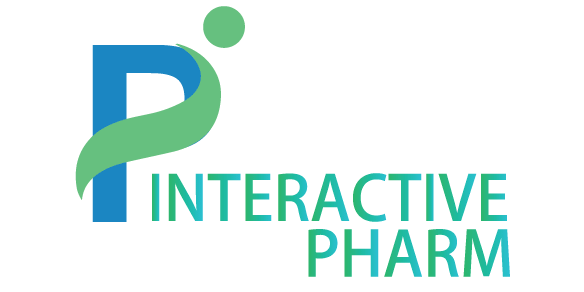In 2006 in France, several drugs sold in poorly designed packaging exposed patients to a risk of serious adverse effects. (2) In 2006, Prescrire used a standardised methodology to examine the packaging of all new pharmaceutical products (656 different boxes) assessed in the New Products section of our French edition, la revue Prescrire. About 75% of these boxes contained tablets or capsules, mostly in blister packs. (3) Poor labelling remains a major problem. The international nonproprietary names (INN) is hard to spot on most boxes of patented brand-name drugs and is often overshadowed by the brand name. The primary packaging of many products does not even include the INN. (4) Two particularly ambiguous types of labelling are becoming more common on blister packs: pre-cut multiple-unit blister packs on which the labelling is truncated when a unit blister is removed; and blister packs on which the labelling spans two blisters, creating a risk of overdose. (5) The use of colours is frequently inappropriate. In particular, irrelevant information is often highlighted unnecessarily, while other, important information is barely visible. (6) Too many devices for oral administration create a risk of misuse. Very few are graduated in units of weight. Most are graduated in millilitres, obliging caregivers to use conversion charts and thus creating a risk of dosing errors. Devices graduated in kg bodyweight can also lead to dosing errors. (7) The labelling of some injectable drugs is barely legible. The various models of plastic ampoules, that are gradually replacing glass ampoules, can represent a danger because they resemble other plastic ampoules containing products administered by different routes. Packaging that does not provide a syringe or needle can cause problems for caregivers and represents another potential source of error. (8) Many of the patient information leaflets examined in 2006 had the same flaws as previously observed, i.e. uneven information quality, discrepancies between different sections, and out-of-date information. More and more French leaflets now include insets offering “Health Advice”. There are better and worse examples, but there is no guarantee that they have been properly reviewed by the regulatory agency. (9) Increasingly drug boxes include pictograms, even though several studies have shown they are often difficult to interpret. And most boxes of generics also now include standard dosing schedules that are not always appropriate and may create a risk of dosing errors with potentially serious consequences. (10) 67 multidose bottles examined in 2006 had no childproof safety cap. Some contained psychotropics, which can have life-threatening effects if accidentally consumed in large amounts. (11) Some manufacturers have adopted realistic solutions to these problems. In particular, generics manufacturers again improved product labelling in 2006 (emphasis on the INN), appropriate use of colours for dose differentiation, and, encouragingly, far more Braille labels. (12) In 2006, the French regulatory agency introduced several measures aimed at improving the labelling of ampoules containing some injectable drugs. The impact of these measures was visible on several products marketed in 2006, including plastic vials of solutions for nebulization. (13) Several other examples of well-designed packaging were seen: safety devices on prefilled syringes; a childproof safety device; a tamperproof ring; unit-dose blister packs; clearly written patient leaflets; and the use of clear and appropriate symbols and pictograms. (14) In practice, in view of the large number of incidents recorded in 2006, and the plethora of packaging designs, caregivers should take time to analyse and discuss drug packaging. In this way, they will be in a position to distinguish between good and bad drug packaging, and to anticipate the risks associated with poorly designed packaging. (15) There are many ways in which drug regulatory authorities can help to ensure that drugs are sold in safe packaging. The French regulatory agency’s work on the labelling of injectable drugs is an encouraging step. European Directive 2004/27/EC on medicines for human use provides for improvements in labelling (e.g. Braille) and patient information leaflets. Transposition of these measures into French law should lead to a number of improvements, provided the relevant regulations and guidelines place patients’ interests first.
Packaging of pharmaceuticals: still too many dangers but several encouraging initiatives.
-
NEED TO REVIEW PET BAN! – Courtesy (Pharma Biz)
Pharma Live, , Pharma Packaging, 0
In September 2014, the union health ministry issued a notification banning the use of PET bottles for packaging of...
-
PACK EXPO Welcomes the Center for Trends & Technology Back to Las Vegas – Courtesy (Healthcare Packaging)
Pharma Live, , Pharma Packaging, 0
PACK EXPO Las Vegas and Pharma EXPO 2015 (Las Vegas Convention Center; Sept. 28–30) welcome back the Center for...
-
A flurry of container and material patents – Courtesy (Packaging Digest)
Pharma Live, , Pharma Packaging, 0
The first part of 2015 has proven a boom time for the publication of patents for packaging. Perhaps that’s...
-
Pharma label – Courtesy (Packaging Digest)
Pharma Live, , Pharma Packaging, 0
The new Pharma-Comb label combines features like holograms, color-shifting security inks and guilloche patterns with voiding effects and LaserSecure,...
-
Micro Computer Tomography for medical device and pharmaceutical packaging analysis
Pharma Live, , Pharma Packaging, 0
1-s2-0-s0731708515000552-mainDownload
-
MWV Healthcare to market Burgopak’s medication adherence packaging in US markets
Pharma Live, , Pharma Packaging, 0
MeadWestvaco Corporation (MWV), a global leader in packaging and packaging solutions, announced a licensing agreement with Burgopak Ltd. MWV...
-
Fusion Packaging unveils innovative foundation bottle – Courtesy (Packaging Digest)
Pharma Live, , Pharma Packaging, 0
Fusion Packaging has unveiled a new and innovative foundation bottle, Scene. Aptly named, the patent-pending package provides a shatterproof,...
-
Sandoz Poland Opens New Packaging Plant – Courtesy (pmpnews.com)
Pharma Live, , Pharma Packaging, 0
Sandoz, the generic division of Novartis, announced the opening this month of the Sandoz Packaging Center in Stryków, a...



